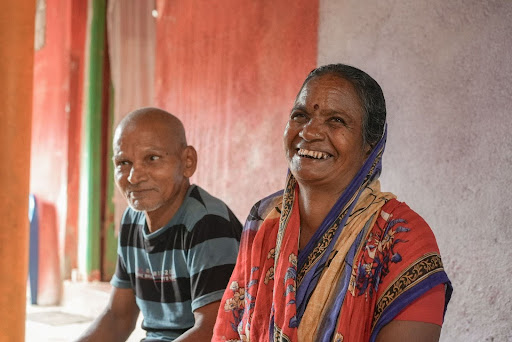Truth: Mental health conditions are medical issues, not spiritual curses.
In many villages, mental illnesses like schizophrenia or depression are wrongly attributed to possession or curses. Families may seek help from faith healers, believing this will resolve the problem. While spiritual practices can provide comfort, proper medical treatment is essential for recovery.
Tip: Educate communities that mental illnesses are similar to physical health conditions—treatable and not caused by supernatural forces.
Truth: Mental health challenges are a concern everywhere, including rural areas.
Research shows that one in seven Indians experiences mental health conditions, and rural communities are often underserved due to limited access to care. Factors like poverty, crop failure, debt, and social isolation can worsen mental health in rural India.
Tip: Bring mental health awareness into local schools, farms, and community centers to address mental health in rural India more effectively. Empowering rural communities through community mental health programs is vital to tackling these issues.
Truth: Most individuals with mental health conditions are not violent.
This harmful stereotype fosters fear and discrimination, which can prevent people from seeking help. In reality, many are more likely to harm themselves than others. Compassion, understanding, and early intervention are crucial.
Tip: Share stories of recovery to humanize mental health and combat stereotypes.
Truth: Willpower or prayer alone cannot cure mental illness.
Phrases like “stop crying” or “think positive” dismiss genuine suffering. Conditions like depression, anxiety, and trauma affect brain functioning and require professional support.
Tip: Respect traditional values while encouraging access to mental health services. Faith and obtaining treatment can work together for healing.
Truth: Seeking mental health support is a sign of strength, not madness.
Anyone experiencing stress, grief, or emotional difficulties can benefit from talking to a trained health worker. Promoting community mental health programs helps more people access the help they deserve.
Tip: Train local leaders and community members to discuss mental health openly and confidently.
Truth: Many people silently struggle while continuing to work.
Physical appearance can be deceiving—someone may seem normal but be battling deep emotional pain. Ignoring these signs can lead to burnout, addiction, or worse.
Tip: Educate communities to recognize early warning signs like changes in sleep, anger, or social withdrawal.
Truth: Rural mental health programs are expanding, often offering free or low-cost services.
The Live Love Laugh Foundation’s rural community mental health program has helped 21,931 persons with mental illness access care across 15 districts in 8 states. Increasing access to community mental health programs means help is closer than many realize, especially in rural India.
Tip: Spread awareness about free or affordable services in local areas and promote rural mental health programs.
Truth: Children can experience anxiety, depression, or trauma just like adults.
In rural settings, children often witness violence, poverty, and stress, which can impact their emotional development. Early recognition of mental health disorders through community mental health programs is vital.
Tip: Train teachers and caregivers to notice emotional and behavioral changes in children.
Truth: Open conversations can actually save lives.
Asking someone how they’re feeling or if they’re thinking of harming themselves shows you care, and can help the person seek help.
Tip: Equip village health workers with skills to ask questions empathetically and listen without judgment.
Truth: With proper support, recovery in rural India is very possible.
Countless individuals—farmers, homemakers, youth—have managed to rebuild their lives after receiving support.

Mental health in rural India cannot improve unless we break these myths. Through community mental health programs, awareness drives, and honest conversations, we can make mental health care more accessible and accepted. Empowering rural communities with knowledge is the first step.
Want to make a difference? Share this blog, talk openly, and support organizations leading rural mental health programs. Together, we can change the story.